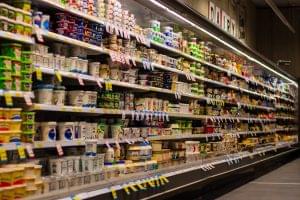Inferior quality foods can be the winners of the crisis
Although food shortages are not expected, demand will most likely shift to cheaper, lower-quality foods due to inflation. – said Attila Csányi, CEO of the Bonafarm Group.

(Photo: Pixabay)
According to the expert, the introduction of the new food price caps can take place by the end of the first quarter of 2023, and the main task of the next years should be to increase the irrigated areas, develop livestock farms and comply with the Common Agricultural Policy, reports the Agrárszektor.
“Only the rise in raw material prices, the drop in energy prices and the increase in wage costs increased inflation by 18-19% this year, plus war-related factors, exchange rate drops and various taxes,” said Attila Csányi at the Portfolio Agricultural Sector 2022 conference. However, according to the CEO of the Bonafarm Group, not all price increases can be blamed on government measures and the war taking place next door, as decision-makers have recently reduced corporate taxes, increased wages and created a favorable support environment. The specialist also pointed out that a good part of inflation depends on raw materials, that is, if there is a significant increase in the price of raw materials, it will have a noticeable effect everywhere. But has this year’s high inflation been worth the growth of recent years? – the magazine quotes his words.
According to the expert, the future is not scary
According to Csányi, in the field of plant cultivation, there is a sufficient commodity base in Hungary, the warehouses are full, and if these stocks can be moved, no further price increase is expected in this area, even if the sector’s costs have risen considerably. In the field of animal feed, it can be seen that the costs of crop cultivation are integrated into the prices, so there will probably not be another price increase in this area. At the same time, according to the specialist, the big loser of price increases could be pork, where a 30% price increase would be necessary, but there is no prospect of such a time. In the milk sector, a 5-15% price increase is expected, after a short-term increase, a correction is expected in the second half of the year, and for poultry, prices are expected to peak in January, after which stagnation or a decline can be expected. – can be read in the Agrárszektor.
In connection with a survey, Attila Csányi said that the poorest segment of the population paid about 26% less for food
The specialist also spoke about the fact that there is no fear of a shortage of goods in the next period, but one must be prepared for the fact that the demand for lower-quality food will increase.
“In the coming years, the government must make sure that the subsidies in the food industry are used for targeted projects based on demand, and in the fields of crop cultivation and plant protection and animal husbandry, they act in accordance with the provisions of the Common Agricultural Policy,” said Attila Csányi.
Agrárszektor
Related news
Prices rose by 3.7% in November
Following a 3.2% year-on-year increase in October, consumer prices in…
Read more >Márton Nagy: the government is keeping inflation low, the emphasis should be on increasing productivity
According to the latest data from the Central Statistical Office,…
Read more >SMEs can apply for HUF 48 billion in non-refundable equipment purchase support
Micro, small and medium-sized enterprises can apply for 48 billion…
Read more >Related news
DélKerTÉSZ: record quantities of Hungarian vegetables in supermarkets
DélKerTÉSZ sold a record volume of Hungarian vegetables to domestic…
Read more >Anora Group’s expansion in the Baltic region
In order to strengthen its position in the Baltics, premium…
Read more >Prices rose by 3.7% in November
Following a 3.2% year-on-year increase in October, consumer prices in…
Read more >






